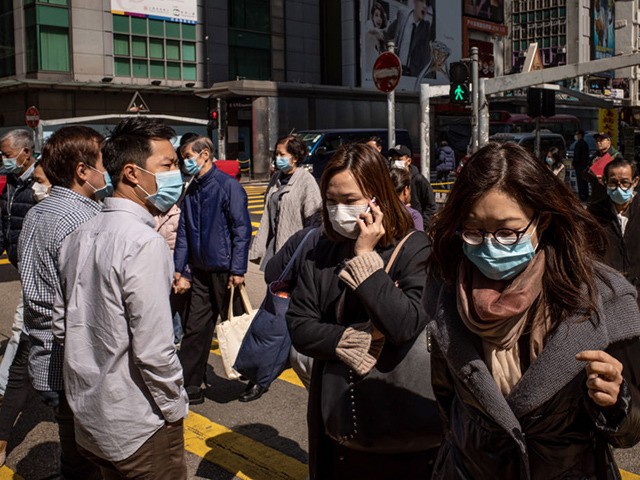The World Health Organization (WHO) and Chinese government statistics revealed on Friday 9,818 cases of individuals confirmed to be carrying the newly identified coronavirus and 213 deaths as a result of viral pneumonia.
All confirmed deaths have occurred in China and most in Wuhan, the city where the virus is believed to have originated. The overwhelming majority of the cases documented are in Hubei province, China, whose capital is Wuhan.
A study published this week in the New England Journal of Medicine revealed evidence that the virus began spreading in Wuhan in mid-December, consistent with eyewitness reports from people in Wuhan who have spoken to media about knowing of an infection going around since then. Confirmation of the beginning of the timeline raises questions as to what took the Chinese Communist Party so long to act to contain the outbreak.
Beijing notified the WHO of its first case on December 31, shut down the suspect meat market on January 1, then proceeded to remain publicly silent until January 20, when it shared a genome sequence with the world. By then, hundreds may have unknowingly been infected.
The WHO has demanded “gratitude and respect” from the world for China’s efforts on viral containment.
The South China Morning Post noted that Thursday’s death toll, 43 people, was a record high since the outbreak began. China claimed that almost as many people, 47, had made a full recovery on Thursday since being diagnosed. The nation logged a total of 1,982 new cases on Thursday, significantly elevating the global total.
All but one of Thursday’s deaths occurred in Hubei and 30 in Wuhan specifically.
Experts believe China’s official statistics are significantly lower than the actual number of people carrying the virus. Two separate academic studies estimate the number of carriers into the tens of thousands, at least over half of the number China is claiming. These estimates were also reported earlier in the week, when the official number of cases was significantly less.
An estimate from virologists at Northeastern University suggested that, as of Tuesday, there were likely 25,000 carriers. Medical researchers at the University of Hong Kong issued an estimate of 44,000 people on the same day.
After these studies were released, Chinese government media outlets claimed that the number of viral infections per day was actually going down, suggesting the outbreak had peaked. No scientist outside of the Chinese Communist Party has concluded similarly.
The secrecy with which the Communist Party has treated the cases so far has resulted in a significant number of reports citing anonymous healthcare sources who believe or have seen evidence of Chinese authorities deliberately underreporting the number of cases to prevent embarrassment. The fastest way to keep the number of infections down is to limit access to testing kits that can confirm infections. Doctors within Wuhan’s hospitals have said they cannot access testing kits for every patient showing the symptoms of carrying the virus, mostly respiratory symptoms. Patients say they have gone to the hospitals with fever, coughing, and other telltale signs of infection and been told that only patients government health officials approve of can receive testing to confirm their status. Chinese state media itself has reported on the dire lack of testing supplies in Wuhan, but claimed it was a genuine shortage Beijing was working to take care of.
Airlines, travel companies, and foreign governments have responded to the lack of clear information on how quickly the virus is spreading by shutting down or warning against travel to China. The U.S. State Department issued its highest travel alert for all of China on Friday, urging American citizens not to go there.
“Travelers should be prepared for travel restrictions to be put into effect with little or no advance notice,” the State Department said. “Commercial carriers have reduced or suspended routes to and from China.”
Italy and Israel have suspended all flights from China into the country. Russia has moved to shut its southern border with the country, as has Mongolia, and Singapore has banned Hubei province residents from entering the island nation. Southeast Asian states have limited some travel, but have hesitated in the face of intimidation from China, as Chinese officials believe cutting travel ties to China suggests a lack of confidence that Beijing has the situation under control.

COMMENTS
Please let us know if you're having issues with commenting.